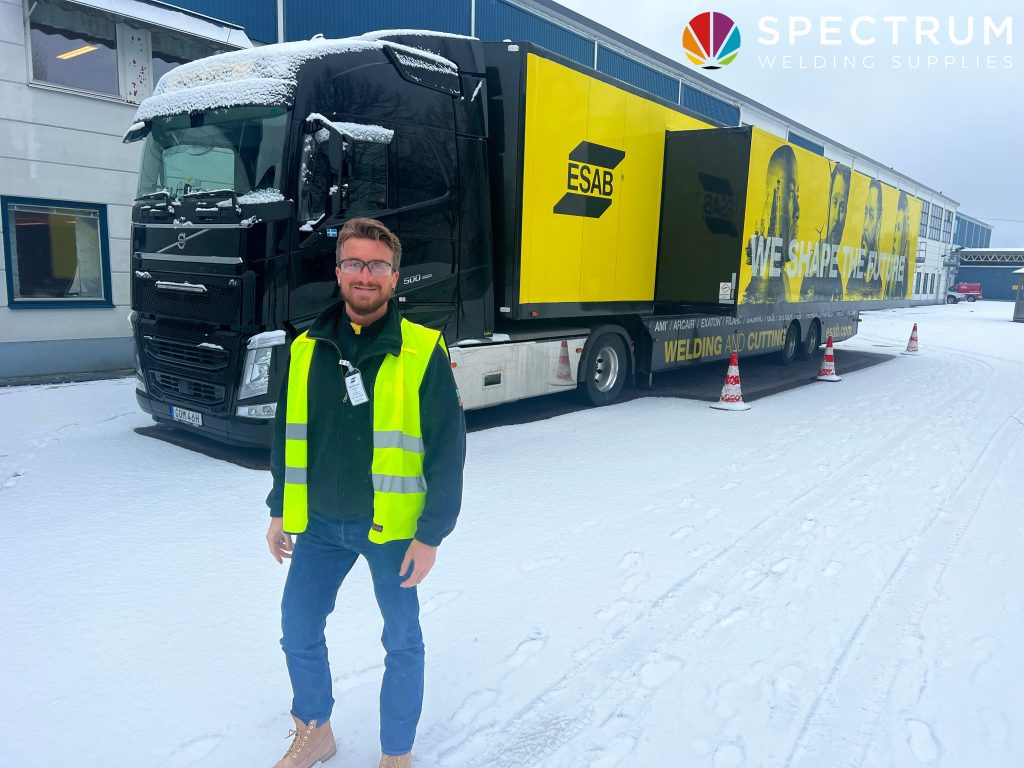Column & Boom delivery, install, commissioning, training
Spectrum is Europe’s biggest stockist of hire plant column & boom sub arc welding manipulators.
We make it easy for the customer when putting a submerged arc welder into your workshop, so rest assured your automated process will be up and running quickly and with outstanding results. See below example how we’d be able to offer a comprehensive machine package, with support and unrivalled service.
CAB SAW HIRE PACKAGE CONFIGURATION:
- Column and boom (CaB size to be confirmed)
- Static base or travelling base (TBC)
- ESAB LAF 1001 SAW power source
- A6 S Arc Master head assembly complete
- Manual slides
- Optional powered slides
- Optional OPC flux recovery unit
- Optional compressor (used with OPC)
- Optional GMH joint tracker
- Optional flux oven
- Setup for 3.2mm wire
Complete Package Support
We offer delivery, install, commissioning, and training, to ensure the operators are competent and certified to use automated SAW. We can also assist with getting you a weld procedure put in place.

Spectrum SAW CaB Systems
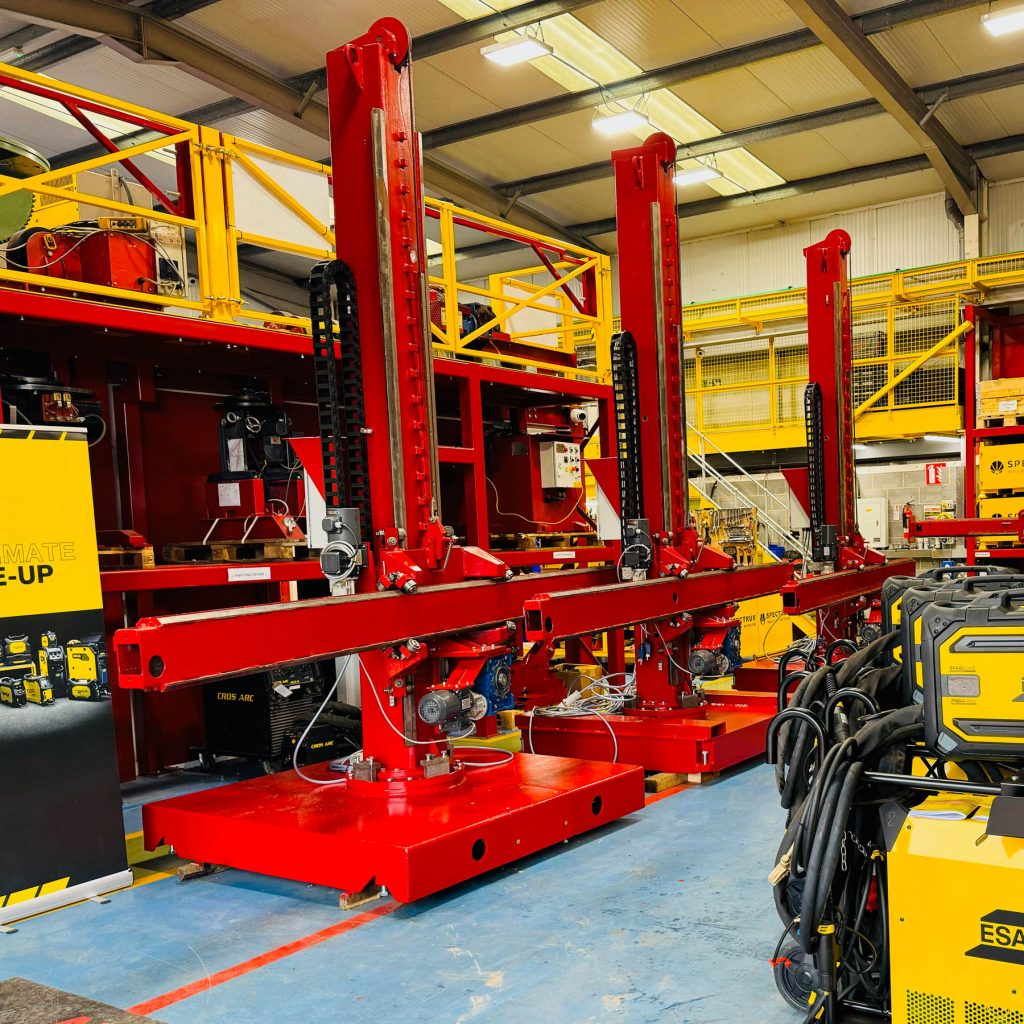
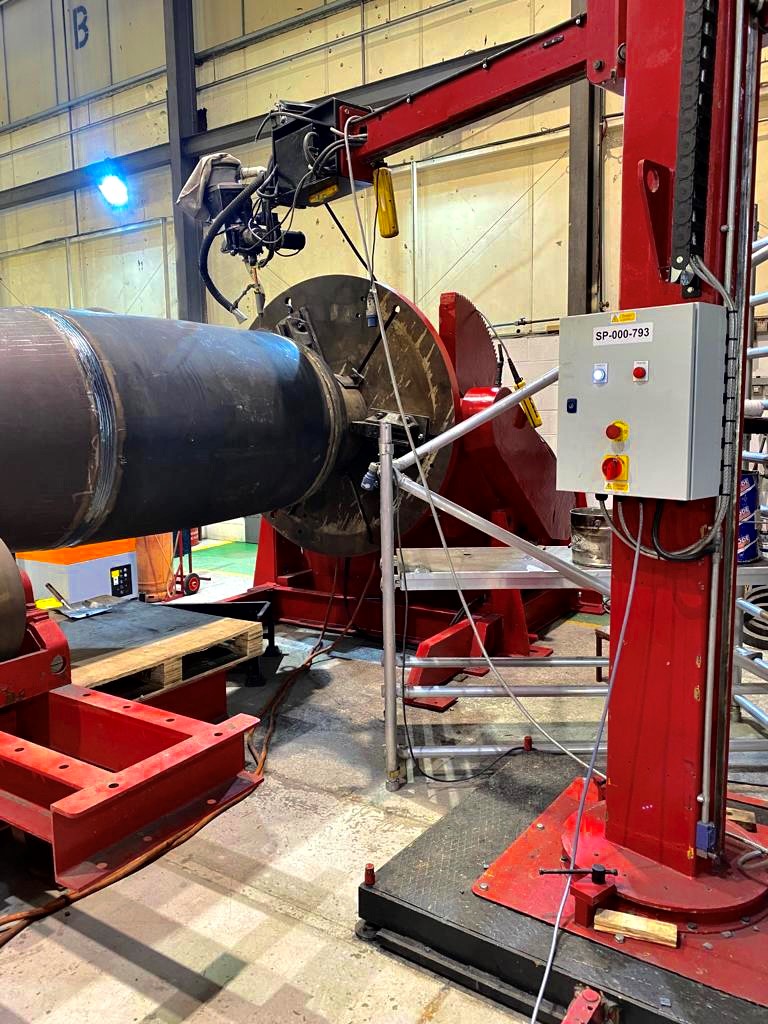
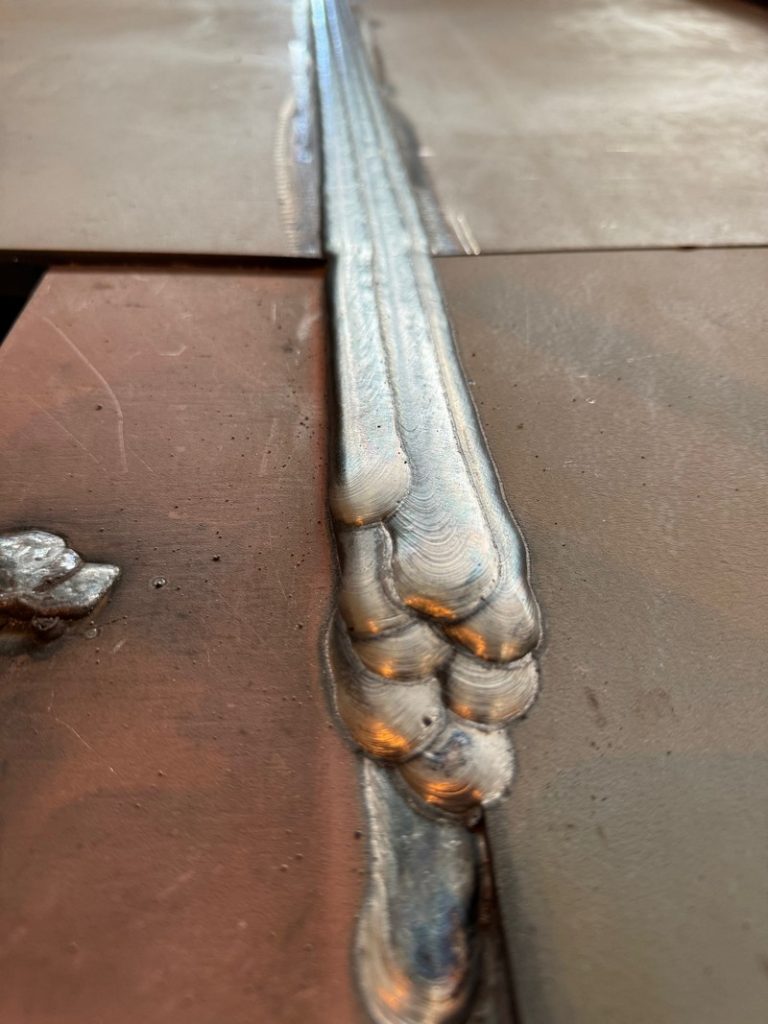
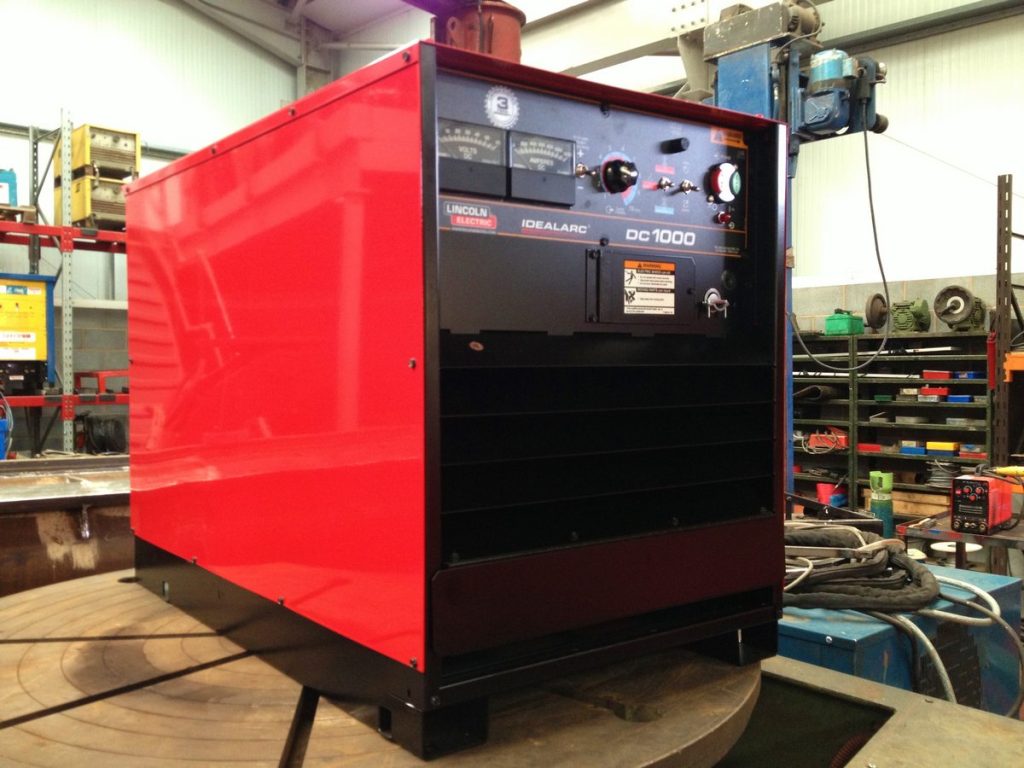
Advice and Guidance
Is it 275 or 355 grade steel?
If for example you’re welding 20mm thick 355 plate with a 60° twin V-prep 100% from one side with 3mm to 3mm flat (2mm gap), you will need to MAG root run, grind back to ensure no porosity, then sub arc weld approx. XXX SAW multi-runs on top of that (as opposed to XXX manual handheld MAG runs on your hands & knees / walking along). MAG root is typically is the only way to get 100% full penetration and to not blow through on the first SAW pass.
Subject to the strictness of the job, you may also need Gullco ceramic backing strips (these are not essential subject to procedure) and foil to be put behind the root pass (if needed and dobale).
Usually when sub arc tractor welding you need ‘run on’ and run off’ plates, so the weld hits the ground running, which you cut off flush afterward so the start and end of the welds are in-line and consistent (with no slope down & crater fill weld ends).
Potentially you can submerged arc root run and eliminate MAG completely (subject to procedure), but will need a steel backing strip (or steel ring is inside a cylinder) put under the roo run of the weld. This is only if steel can be out behind the weld (usually not doable) and allows for the SAW weld pass to blow through onto to achieve a 100% full penetration weld.
35mm plate may need 1x MAG root and approx. XXX sub arc runs to fill (subject to prep and procedure), as opposed to approx. XXX handheld MAG runs. This would be crazy when you could just send an ESAB sub arc tractor down the prep and get perfect welds every time. Automating your SAW weld procedure will be infinity quicker and easier, and you’ll never go back to manual MAG.
To get the procedure verified, the below is a general rule of thumb:
- Test welds on the same type of plate / same prep will need to be done.
- Method written down for 10mm plate ie. XXX runs.
- Maximum capping run (or runs) width of XXXmm.
- Ultra Sonic tested to see if the welds passed.
- Laboratory test done after (for DNV) to make sure there are no weak zones / Charpy test.
- Get a NDT company to formally write that SAW weld procedure (inc. interpass temperature stipulations) into a document to follow.
SAW Training
- Operators trained and certified to use automated SAW in accordance with DNV ISO 3834.
- Parameters addressed to suit application inc. XXXamps, XXXvolts and XXXcm per minute settings (subject to prep) appropriate for single wire type and plate thickness.
- Interpass temperature is imperative to follow – you will need a digital thermometer gun to make sure the prep has gone down to XXX°C before putting in another weld – the WPS will state this.
- With submerged arc, you don’t necessary need the operator to be coded (some clients do need the operator to be coded), as the automated SAW welding machine is classed as doing the weld.
- The training and certificate of competency in accordance with DNV ISO 3834 will make sure the operator is aware of all issues to note ie. setup, safe use of equipment, prep, parameters, dos & don’ts, interpass temperature, and the comprehensive guide to ensure full and proper understanding of the welding process to ensure consistent success.
- Because every job is different ie. grade of steel, thickness, prep, process etc, the weld parameters will alter.
- To formally sign off on a PQR / WPS procedure before the weld goes into the job, you will need NDT / lab / metallurgist / weld procedure company such as an NDT specialist to put a formal and verified SAW weld procedure in place.
- NDT companies such as Solus Testing NDT will get you the weld procedure in writing if required, and will suggest the below.
- Weld test done in your workshop to a set of parameters, on a test piece.
- NDT company to ultra sonic / x-ray / dye pen test piece (to ensure no cracking / verify structural integrity of steel / to show weld run layering and heat affected zones).
- Laboratory Charpy test on the test piece to verify metallurgic integrity ie. tensile and yield strength.
- Weld procedure (WPS) then formally written by an NDT company (after NDT and lab results comes back as a ‘PASS’) that stipulates consumables, parameters, and interpass temperatures stipulations.
Should you have any further questions, we’ll be happy to help.
